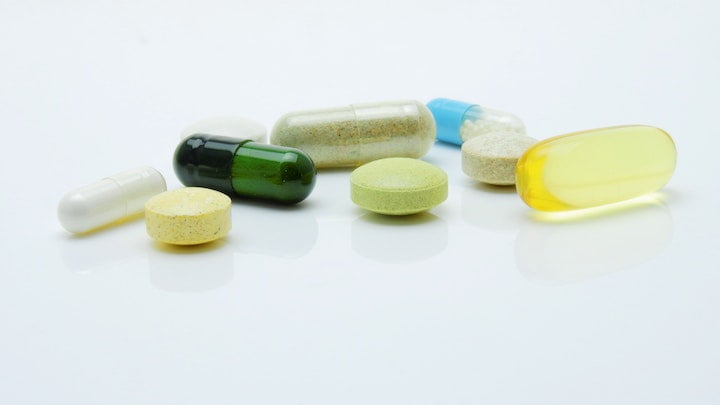When a person is addicted to a substance and wishes to be free from that addiction, in most cases, they will need to detox.
Detoxification is the process by which the body and brain expel harmful substances.
Because addiction often means that the brain and body have become dependent upon a substance to function, this can lead to some pretty unpleasant withdrawal symptoms.
Withdrawal symptoms vary from substance to substance and can range from mild to severe.
Heroin withdrawal, for example, can lead to life-threatening withdrawal symptoms such as hypertension (high blood pressure), rapid heart rate, and breathing issues. Because of the severity of these symptoms, people are likely to be given medication that helps reduce them.
In recent years, one such medication has become increasingly popular: Suboxone.
Although useful for combatting withdrawal symptoms, Suboxone can lead to some unpleasant side effects. (1) This has led many people to ask if Suboxone is worth it and what are the consequences of using it.
This article will answer these questions, asking what Suboxone is, what are its side effects, and whether it is worth it.
What is Suboxone?

Suboxone, or Buprenorphine/Naloxone, is a synthetic opioid used to treat people that have a dependency on opioid drugs (Opioid Use Disorder or OUD), such as heroin.
Suboxone is administered as an oral film – either sublingual film (placed under the tongue to dissolve) or buccal film (placed between the gums and cheeks to dissolve).
Each film is made up of two drugs: Buprenorphine and Naloxone.
Buprenorphine is a long-lasting opioid that prevents people from experiencing withdrawal.
Naloxone prevents the effects of opioids, essentially preventing the use of Suboxone leading to opioid abuse.
Suboxone commonly comes in four different mg doses:
- 0.5 mg Naloxone / 2 mg Buprenorphine
- 1 mg Naloxone / 4 mg Buprenorphine
- 2 mg Naloxone / 8 mg Buprenorphine
- 3 mg Naloxone / 12 mg Buprenorphine
The Suboxone dosage that people are given is dependent upon several factors:
- The severity of the opioid dependency
- The stage of treatment the person is in, such as pre or post detoxification
- If the person has any other medical conditions
In general, however, most people will be started on a low dose, which will be increased over time if needed.
Suboxone has two primary functions: to alleviate cravings and reduce/eliminate withdrawal symptoms. Commonly, Suboxone is prescribed to people that are detoxing and/or trying to recover from opioid addiction.
Studies have found Suboxone to be useful for treating OUD.
In addition, Suboxone is also prescribed as an alternative to substances such as heroin.
It is common for Suboxone to be prescribed as part of people’s aftercare plan following rehab. This, along with therapy and support groups, drastically decreases the likelihood of someone relapsing. (2)
Is Suboxone Worth it?
As mentioned, Suboxone is used to alleviate withdrawal symptoms associated with opioid addiction. But what does this mean?
Opioid withdrawal symptoms can vary from mild to severe. Some mild to moderate symptoms include:
- Intense cravings
- Anxiety
- Depression
- Vomiting
- Diarrohea
- Nausea
- Shakes
- Agitation
- Muscle spasms
As mentioned earlier, some severe withdrawal symptoms include:
- Impaired respiration
- Hypertension
- Rapid heart rate
Suboxone is great at reducing such withdrawal symptoms.
For example, because Suboxone is a synthetic opioid, it helps remove people’s cravings. This makes the detox process much easier and helps prevent relapse.
Further, buprenorphine is a lot stronger than morphine. This means that Suboxone can drastically reduce pains and aches associated with withdrawal.
Because Suboxone acts on the receptors in the brain that are associated with anxiety, it can help people relax and counteract anxiety and depression.
This relaxation can also help with shakes, restlessness, insomnia, muscle spasms, and breathing issues.
It should be mentioned, however, that Suboxone is an opioid substitute designed to help people withdraw. This means that people, when coming off Suboxone, will still have to deal with withdrawal symptoms.
In other words, it helps alleviate withdrawal but does not cure it. (3)
Suboxone Side Effects

Although suboxone has a proven track record of minimising cravings and withdrawals, it does come with some caveats.
Suboxone can produce some side effects, ranging from mild to serious.
Some mild to moderate side effects include:
- Headaches
- Fatigue
- Stomach issues, such as constipation
- Sweats
- Anxiety and depression
- Trouble sleeping
- Risk of misuse
- Other opioid-related withdrawal symptoms, such as physical dependence, aches, diarrhoea, and insomnia
Severe side effects include:
- Damage to the liver
- Suboxone dependency
- Respiratory issues
- Hormone problems
- Allergic reaction
Studies have found that Suboxone can lead to liver damage. However, this is rare and depends upon the condition of the person’s liver prior to taking Suboxone.
For example, a GP will run a blood test before prescribing Suboxone and if they find hepatitis, the GP will likely recommend another form of treatment.
One of the biggest risks of using Suboxone is dependency – both psychological and physical.
Although Suboxone is designed to reduce the main addictive components of heroin, it can still be addictive and lead to cravings and drug-seeking behaviours, which may lead to Suboxone abuse.
This could, in turn, lead to withdrawal symptoms when the person stops using Suboxone.
Suboxone has also been found to cause breathing issues. Again, this is rare and more likely to occur if it is abused or the person using has a history of breathing issues, such as Chronic Obstructive Pulmonary Disease (COPD).
Clinical trials that looked at if Suboxone causes changes in hormones are unclear. However, some studies have found that Suboxone can affect levels of testosterone. Some men have reported having a lower sex drive and experiencing sexual dysfunction.
Finally, there have been some reports of people having an allergic reaction to Suboxone. Like liver damage and breathing issues, this is rare and will be dependent upon the individual.
Signs of an allergic reaction to Suboxone might include swelling of the throat, lips, and tongue, skin rash, and difficulty breathing. (4)
Other Common Side Effects of Suboxone

In addition to those mentioned above, there are some side effects of Suboxone that are more common than others.
These are side effects that have been reported more regularly than those previously mentioned.
These include:
- Constipation
- Weight loss or weight gain
- Headaches
- Sweating
Constipation is a common side effect of all opioids and Suboxone is no different. One of the main causes of this is a decrease in fluids. Opioids impede the GI tract and cause the intestines to have less fluid.
This, in turn, leads the intestines to become very dry, which hardens stool and leads to constipation.
Weight loss or gain has also been reported frequently by people that use/have used Suboxone. In some cases, people reported drastic weight loss of between 20 to 40 pounds.
However, it should be noted, that this probably has more to do with the lifestyle of people taking Suboxone, as opposed to the drug itself.
For example, opioids can lead to a lack of appetite. This, over time, will lead to weight loss.
Another common complaint by people that use Suboxone is headaches.
This can be rooted in two things: opioid hyperalgesia (treatment with opioids can lead to increased pain sensitivity) and rebound headaches (headaches connected to medication overuse).
Sweating is another common side effect of suboxone.
The specific reason for this is unknown. However, some studies suggest that it is due to the release of histamines and interference with body temperature. (5)
Are There Any Other Alternatives to Suboxone?

Yes, there are several. Examples include Methadone, Zubsolv, and Sublocade.
Methadone is another synthetic opioid. Like Suboxone, Methadone is used to treat people with heroin addiction.
It helps reduce withdrawal symptoms such as shakes and other flu-like symptoms.
There are two commonly used approaches when using Methadone treatment as a substitution treatment:
- Detoxification – people switch from using heroin to using Methadone and then gradually begin to withdraw from Methadone.
- Maintenance therapy – people switch from heroin to methadone but do not slowly withdraw. Instead, methadone acts as a substitute. In this case, people will use Methadone long-term.
Zubsolv is pretty much the same as Suboxone. It is made up of both Buprenorphine and Naloxone.
However, it does differ in several ways.
It tastes different, comes in a small tablet, as opposed to film, and has better bioavailability (designed in a way that the body absorbs it better).
The last difference is the biggest and most important. The effectiveness of the body to absorb it means the higher chance that it will be effective.
This makes Zubsolv a popular alternative to Suboxone.
Finally, Sublocade contains only Buprenorphine and is administered once a month via an injection. (6)
References
(1) Velander, Jennifer R. “Suboxone: rationale, science, misconceptions.” Ochsner Journal 18, no. 1 (2018): 23-29.
(2) Ostrach, Bayla, and Catherine Leiner. ““I didn’t want to be on suboxone at first…”–Ambivalence in perinatal substance use treatment.” Journal of Addiction Medicine 13, no. 4 (2019): 264-271.
(3) Haffajee, Rebecca L., and Richard G. Frank. “Generic drug policy and suboxone to treat opioid use disorder.” Journal of Law, Medicine & Ethics 47, no. S4 (2019): 43-53.
(4) Peddicord, Adam N., Chris Bush, and Crystal Cruze. “A comparison of Suboxone and methadone in the treatment of opiate addiction.” Journal of Addiction Research & Therapy 6, no. 4 (2015): 1-4.
(5) Simojoki, Kaarlo, Helena Vorma, and Hannu Alho. “A retrospective evaluation of patients switched from buprenorphine (Subutex) to the buprenorphine/naloxone combination (Suboxone).” Substance abuse treatment, prevention, and policy 3, no. 1 (2008): 1-6.
(6) Magura, Stephen, and Andrew Rosenblum. “Leaving methadone treatment: lessons learned, lessons forgotten, lessons ignored.” The Mount Sinai Journal of Medicine, New York 68, no. 1 (2001): 62-74; Heo, Young-A., and Lesley J. Scott. “Buprenorphine/Naloxone (Zubsolv®): A review in opioid dependence.” CNS drugs 32, no. 9 (2018): 875-882.; and, Pineo, Thomas, John D. Goldman, Greg Swartzentruber, Tejaswi Kanderi, Hafiz Qurashi, and Christina Dimech. “An observational study on the use of long acting buprenorphine (Sublocade) and a Tamper resistant PICC for Outpatient IV antibiotic administration in Patients with serious infections and Opioid Use Disorder; The STOP OUD project.” Drug and Alcohol Dependence Reports 2 (2022): 100020.





